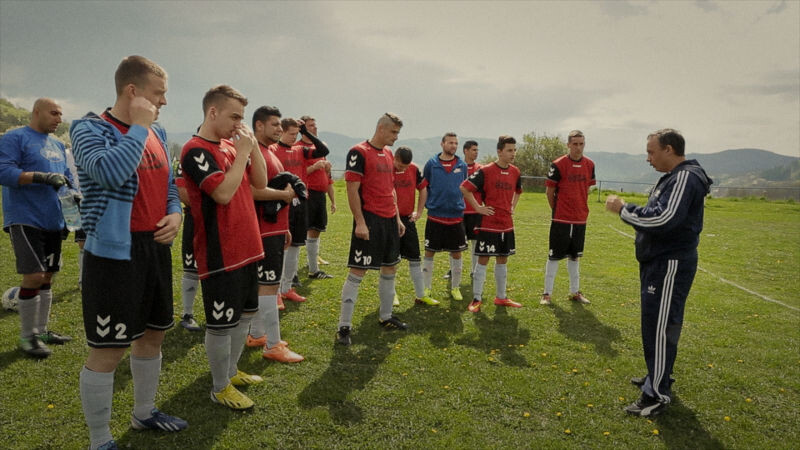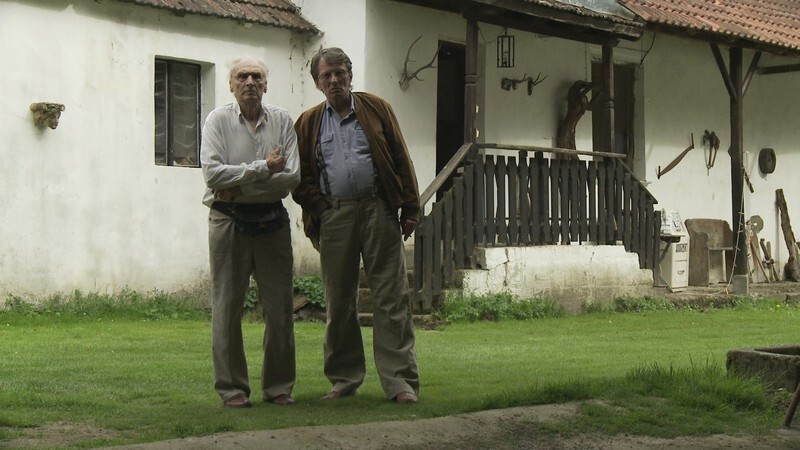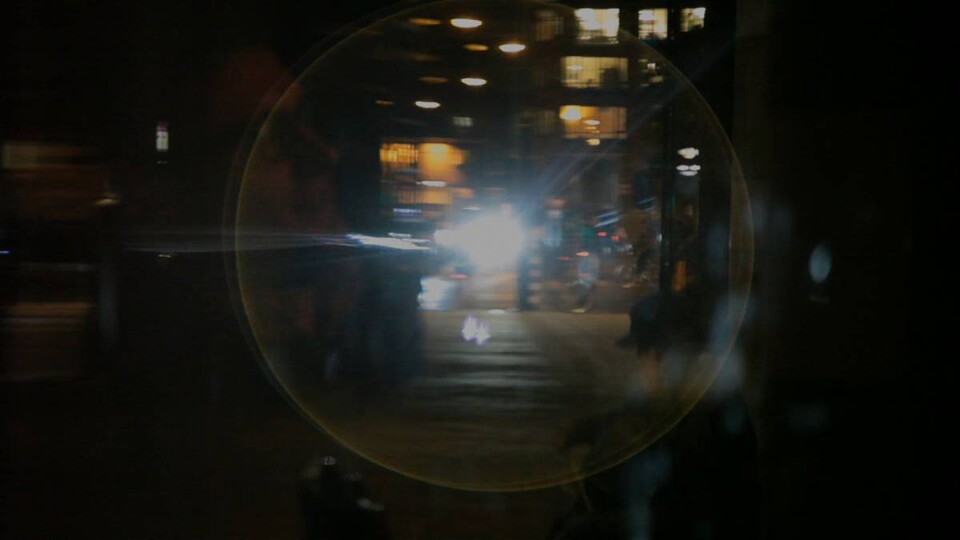Film Humour on the Football Field
Two years ago, the stagnant waters of the district football league were stirred by medialized case of FC Roma. The protagonists themselves are unable to explain why no other team wants to get face to face with them on the football field. And so we are witnessing endless phone calls and pointless training sessions. FC Roma, one of the two Czech documentaries in this year’s competition of the Karlovy Vary International Film Festival tells the story of two football players from Děčín, Patrik Herák and Pavel Horváth, who are trying to regain their position in the regional league. The film was made by a duo of authors – scriptwriter Tomáš Bojar (TB) and documentarian Rozálie Kohoutová (RK) – who spent almost two years shooting.
Where did the idea to shoot FC Roma in a tandem come from?
RK: Two years ago, media published the case of forfeit victories of a Roma football team in Děčín. Me and producer Pavla Kubečková decided to go and check the situation out. We were very interested in the story, but we needed someone who would be familiar with the football aspect of the film. I asked Pavel Abrahám to tell me who the author of the idea behind the football-themed documentary Two Nil was, and he mentioned Tomáš. I had no idea what this collaboration would entail, I ‘d never directed a film with someone else.
TB: I’ve made all of my previous films with another director so it was nothing new for me. But I have to admit that I didn’t like the approach of media to the whole case with one party creating an image of a violent team whereas the other one, let’s say human-rightist, invited ambassadors from all over the world to come and play football with FC Roma. The whole hysteria seemed just over the top. But the crucial point came when I watched the team’s coach Pavel Horváth for about fifteen minutes. I saw his reactions by the sideline, his zeal and emotions and all of this had me convinced to go back to Děčín the following week.
Did you divide your tasks when making preparations for the film and writing the script, or did you do everything together?
RK: We met repeatedly in Prague to produce shooting schedules. We thought the individual matches through to the last detail. In advance, we managed to agree on what our goal was and what we expected from the individual scenes. When shooting in Děčín we were on the same page. I was also doing the camera work. The job of a director who’s also behind the camera is rather specific so I have to say that we weren’t in each other’s way. During the most dramatic match between FC Roma and SK Březiny we had five cameras rolling. We planned it in advance who would be recording which of the protagonists and where the cameras would be moving during the match.
“The key decision we made as directors was not to shoot football.”
Can you describe what this credo looks like in practice? How can you write a script or a plan for a football match?
TB: Everything happens on the spot without our intervention. This was also our strategy in Pavel Abrahám’s film Two Nil but this was on a much lower scale. It’s important to know the protagonists and the whole setting. You need to be able to choose an adequate method of shooting to achieve maximum authenticity. The protagonists can get absorbed in the game and forget about the camera.
RK: Our crucial decision was that we would not be shooting football. We focused primarily on our main protagonists, Patrik and Pavel. And when FC Roma scores a goal, the viewers don’t see it, because we show the reactions of the coach and the goalkeeper.
 |
 |
FC Roma (2016)
What did the script of your documentary film look like?
TB: As I see it, there’s in principle only one filmmaking method. Regardless of whether you have actors or civilians in the film, the basic principles remain very similar. Our film logically does not feature any scripted dialogues in the traditional sense of the word but we work with rather accurately predefined situational frameworks that can be taken for a sort of a script. In the film, we are trying to structure them in line with what we already know, but at the same time, we often let ourselves be surprised by the unpredictable reality. The degree of spontaneity differs from case to case. You also have to keep in mind that when you’re working on a film, you have to have some sort of an overall concept, a structure. You are not coming to shoot anything but you follow a rather specific plan of what to capture on the camera, why you want to capture that and what role does it play in the entire structure. But of course, when something interesting interferes with your plan, that can be a good thing.
Could you describe how such a concept is implemented in practice?
RK: In terms of documentary filmmaking, you have to find a way of expressing the efforts, the reality and the stories of our characters using the film medium. This is a script. We need to intensify the situations so that they can be transferred onto the screen. We are trying to push the situations so that they would unfold on some photogenic level that could be captured in a film.
“Life will eventually find its own way.”
TB: In principle, every film is a bit of a scam, there’s no way of avoiding this. The author assembles images creating a film reality that pretends to be the “outside” reality. But this can naturally never be the case considering all the consequences. However, I believe that our film stays loyal to the basic contours of reality as we got to know it in Děčín. Our method stemmed from the assumption that everything valuable would eventually take place spontaneously and unexpectedly within a pre-defined framework. And that life would eventually find its own way, we have only given it a general structure.”
Let’s now focus on the editing work. Who was the boss?
RK: We had one simple rule – two against one. When there was a problem, this was our democratic decision-making strategy.
TB: And perhaps it was even democracy based on a reasonable debate and arguments. I personally believe that in this type of a film, the editor is one of the co-scriptwriters. It was important that in the very beginning, the three of us quickly agreed on a basic method of film narration. We rather quickly managed to identify the valuable material, and tell the situational effect or depth of the footage including the possible interpretations.
RK: Another advantage of working in a team of two was that we could take turns editing the film. When one of us was sitting in the editing room, the other could take a couple days off to look at the progress from least a small distance and with a clear head.
|
FC Roma (2016) |
FC Roma's coach Pavel Horváth and goalkeeper Patrik Herák |
“FC Roma does not take the usual approach to depicting the cohabitation of the Czech majority and the Roma community.”
TB: For me, editing work is when the film starts to be actually made. In the beginning we spent whole days in the editing room: watching the footage, looking for surprising associations between the individual scenes, juxtaposing them and letting them interact. It is a rather subtle and intuitive work in which the rhythm, dynamics and work with contrast play the main role. So it is necessary to deal with everything on the spot and to have the material constantly in front of your eyes.
RK: In fact, the film didn’t take that long to complete. Afterwards, we had long discussions because someone had told us that FC Roma could be considered provocative. By taking a humorous angle, we have from the very start turned away from the subconsciously required hyper-correct approach to the Roma issue. Our characters have a specific sense of humour that is really not entirely correct and to some people may seem unacceptable.
What specifically was pinpointed as provocative in your film?
RK: FC Roma does not take the usual approach to depicting the cohabitation of the Czech majority and the Roma community as portrayed in media. On the one hand, we can see these hyper-correct laments of Prague’s intellectual circles, on the other there is this sensationalist approach of the tabloids. Sometimes, there is a third attitude, when the so-called intellectual media react with an exaggerated self-censorship and refuse to comment on this topic. Our comedy-style approach might be touching upon sensitive issues.
TB: However, I’m reluctant to see any clear message about the Roma community in the film, because the community itself is very diverse and has many different layers. It is primarily a story of Pavel and Patrik in a specific situation. The fact that they are Roma naturally plays a role, that is clear. But other Roma would have acted differently in the same situation. In terms of social sciences, we would call it a preparatory study rather than a comprehensive monograph.





